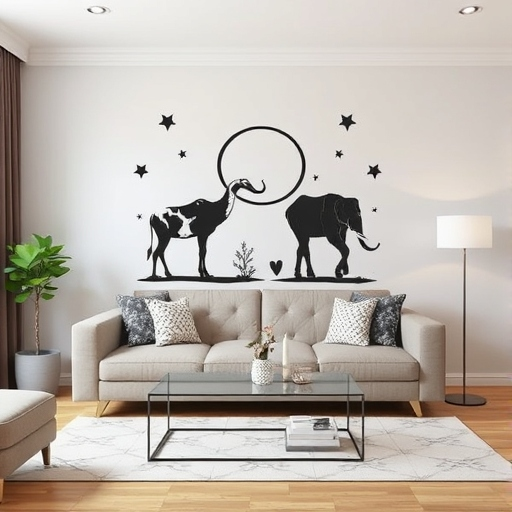
Transform Your Living Room: Expert Home Decor Tips & Ideas 2025
Introduction
Your living room is more than just a space—it’s where you entertain, relax, and make memories. Whether your style leans toward modern minimalism or cozy rustic charm, creating a harmonious living room can feel daunting. But don’t worry! With expert home decor tips and ideas, you’ll soon have a space you’re proud to show off.
The Essentials of Living Room Transformation
Define Your Style
Before making any changes, ask yourself: What’s your living room vibe? Minimalist, boho, classic, or eclectic? Understanding your style sets the foundation for all design choices.
Tips:
- Browse Pinterest or interior design magazines for inspiration.
- Create a vision board to visualize your ideal space.
- Stick to a cohesive color palette.
Furniture Layout and Functionality
Your furniture layout plays a critical role in how your living room feels and functions.
Key Strategies:
- Arrange seating to encourage conversation.
- Use rugs to define areas in open-plan spaces.
- Incorporate multi-functional furniture like ottomans with storage.

Table: Ideal Furniture Layouts Based on Room Size
| Room Size | Suggested Layout | Tips |
|---|---|---|
| Small | Compact sofa, wall-mounted shelves | Keep pathways clear for easy movement. |
| Medium | Sectional sofa, coffee table | Add an accent chair for extra seating. |
| Large | Multiple seating areas | Use large rugs to anchor the space. |
Lighting Matters
Lighting transforms the ambiance of your living room.
Types of Lighting:
- Ambient Lighting: Overall illumination (e.g., ceiling fixtures).
- Task Lighting: Focused light for activities (e.g., reading lamps).
- Accent Lighting: Highlights decor (e.g., wall sconces).
Expert Tip: Layer different types of lighting for a balanced effect.
Add Personality with Decor
Decor reflects your unique style.
Suggestions:
- Incorporate personal items like photos or heirlooms.
- Use throw pillows and blankets to add texture and color.
- Add greenery with indoor plants.
- Include artwork that speaks to you or complements your theme.
- Display a mix of decorative items like vases, books, or sculptures.
Flooring and Rugs
The flooring you choose has a significant impact on the overall look and feel of your living room.
Options to Consider:
- Hardwood floors for a classic and elegant appeal.
- Area rugs to add warmth and define spaces.
- Durable, easy-to-clean options for families with pets or kids.
Pro Tip: Layer rugs for a cozy, designer touch.
Walls and Color Schemes
Your walls are a blank canvas waiting for creativity.
Ideas:
- Paint an accent wall to create a focal point.
- Use wallpaper for texture and patterns.
- Hang large mirrors to reflect light and make the room appear bigger.
Popular Color Trends:
- Neutral shades with bold accents.
- Earth tones for a calming effect.
- Jewel tones for a luxurious vibe.
Storage Solutions
Clutter-free spaces create a sense of calm and order.
Tips:
- Use built-in shelving for books and decor.
- Invest in stylish storage ottomans or baskets.
- Mount floating shelves for added functionality without taking up floor space.
FAQs
What are simple ways to refresh my living room decor?
Focus Keyword: Transform Your Living Room: Expert Home Decor Tips & Ideas. Simple updates like changing throw pillows, adding new artwork, or rearranging furniture can give your living room a fresh look without major renovations.
How do I choose the best color scheme?
Pick colors that reflect your personality and complement your home’s overall style. Neutral tones with pops of color work well to create balance.
Can lighting really change the feel of my living room?
Absolutely! Lighting influences mood and functionality. Combine ambient, task, and accent lighting for a cohesive and welcoming atmosphere.
How do I make a small living room look bigger?
Use mirrors to reflect light, stick to a light color palette, and choose furniture that doubles as storage.
What are the best materials for a durable living room?
Opt for stain-resistant fabrics, durable hardwoods, and easy-to-clean surfaces for a family-friendly space.
How do I incorporate greenery into my living room?
Choose low-maintenance indoor plants like succulents or snake plants. Use decorative planters to match your style.
What are the latest trends in living room decor?
Current trends include sustainable materials, multifunctional furniture, and bold, colorful accents.
Conclusion
Transforming your living room doesn’t have to be overwhelming. Start with these expert tips to create a space that’s functional, stylish, and uniquely yours. Share your journey or any tips you’ve discovered in the comments below!





